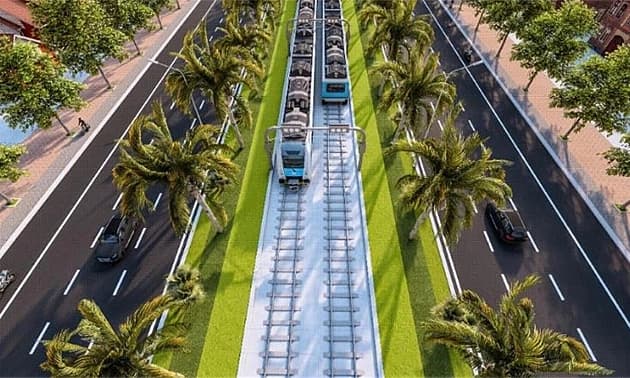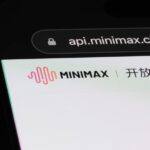A fast track plan for a growing island
Phu Quoc is moving ahead with its first urban rail line, a new 18 kilometer metro designed to move travelers between Phu Quoc International Airport and the planned APEC Conference Center by 2027. Trains are specified for speeds between 70 and 100 kilometers per hour, with six stations and a dedicated maintenance facility to anchor the new system. Construction is scheduled to begin in the fourth quarter of 2025 and wrap up in the second quarter of 2027, a brisk timeline that lines up with the APEC Economic Leaders Week that Vietnam will host in 2027. The project budget is nearly 9 trillion Vietnamese dong, about 360 million US dollars.
Provincial authorities approved the project on October 24 under a public private framework. The initial phase will link the airport and the APEC center along a corridor that captures many of the island’s most active urban and tourism zones. The alignment combines 1.3 kilometers of elevated track, 14.3 kilometers at ground level, and a two kilometer underground segment beneath the central urban area. The mix of profiles is intended to minimize land constraints in dense districts while keeping construction costs in check where surface rights of way can be secured.
Phu Quoc Sun Co., Ltd will deliver the line under a build operate transfer (BOT) contract. The state will provide up to 70 percent of the capital, a little over 6.2 trillion dong. The private investor will contribute more than 2.6 trillion dong. Once the system is handed over for operations, the concession can run for up to 40 years. The island, part of Kien Giang province, expects the metro to anchor a modern public transport network for residents and visitors, relieve chronic bottlenecks during peak seasons, and support greener growth through 2030.
Funding and contract structure
The financing model blends public support and private delivery to speed up a complex project on a tight schedule. A public private partnership allows the government to shoulder early capital needs and long lived civil works while a private entity procures trains, builds stations and systems, and runs daily service. That structure can accelerate timelines, transfer certain construction risks to the private side, and align incentives around on time commissioning.
On this line, state funding will not exceed 70 percent of the total budget, with the balance provided by the investor or a project enterprise. Revenue is expected to come from fares and related commercial activities, such as advertising and retail spaces in stations. The government can support the project with a viability gap grant so that the operator can maintain affordable fares without sacrificing basic maintenance, safety, and service frequency. Contracts usually define a performance regime, with penalties for missed targets and clawbacks for poor service, which helps protect passengers and public budgets.
What BOT means in practice
Under a build operate transfer (BOT) model, the private investor designs and builds the line, then operates it for a defined period to recover capital and earn a return. At the end of the concession, the asset transfers back to the state in working condition. For riders, that usually means a single brand and operator during the contract period, with fares and service standards set by the government and embedded in the contract. Authorities retain oversight, including audits, safety certification, and approval of any fare changes.
BOT contracts in transport often include minimum service requirements, such as first and last train times, maximum headways at busy hours, cleanliness standards, and response times for incidents. They also define how unplanned events are handled, from storms to power outages. The mix of public funding and private operation is common in Asian transport projects that have a public service mission but need the capacity and speed of private delivery.
Route, stations, and rolling stock
The first phase runs from the airport to the APEC Conference Center and passes through the main urban core. Elevated track appears near constrained road corridors and station approaches, while the core business and government district will see a two kilometer underground section to protect street capacity and public space. At ground level the line can follow available rights of way, separated from traffic to maintain speed and safety. Six stations will anchor the route, spaced to balance walk access with travel time.
Trains will have three to five carriages, each longer than 34 meters and designed to carry around 180 passengers. That gives a single train a crush capacity in the range of 540 to 900 passengers, depending on the formation. With designed top speeds of 70 to 100 kilometers per hour and urban station spacing, end to end travel should take around half an hour, a major upgrade over peak season road trips that are often slowed by congestion. Platform layouts, wayfinding, and airport station design are expected to prioritize easy baggage movement and step free access, in line with current best practice for airport rail links.
Safety and reliability will be front and center. New systems of this type typically deploy modern signaling and protection, comprehensive CCTV coverage, fire safety systems, and secure communications. Level crossings are avoided on metro style lines, which improves safety and timetable reliability. The maintenance site will support daily inspections, bodywork and wheel maintenance, and component replacement, which is vital on a coastal island where salt and humidity raise corrosion risks.
Why 2027 matters
Vietnam will host APEC Economic Leaders Week in 2027 in Phu Quoc. That gathering brings leaders from 21 economies, support staff, media, and security teams, as well as business forums and ministerial sessions. Moving thousands of participants quickly and predictably between the airport, hotels, and the main convention site is a high priority. A direct rail link from the terminal to the convention center can cut travel time, reduce pressure on motorcades and shuttle buses, and provide a fail safe option during peak periods.
The new APEC Convention Center is itself a major investment. The complex covers 28 hectares, with a 3,500 seat hall and a 3,000 seat media center. It will sit within a planned district that includes transport infrastructure, public squares, and exhibition spaces. Site preparation is already far along, and test piles are finished. The metro’s first phase is tailored to serve this site, giving delegates and media a single ride from the airport and an easy onward trip to hotels and service areas near the venues.
Airport upgrade in lockstep
Phu Quoc International Airport is being expanded on a fast schedule to meet the APEC 2027 timeline and the island’s long term growth. The plan upgrades the airfield to an ICAO 4E standard, with Runway 1 extended to 3,500 meters and a new 3,300 meter Runway 2. A new Terminal T2 and a separate VIP terminal will support higher passenger volumes and protocol service during major events. The apron system will grow to accommodate more than 100 aircraft stands, including positions for wide body jets such as Boeing 787 and Airbus A350. The expansion targets an annual capacity of up to 20 million passengers.
Designers intend to deploy smart airport technologies including remote check in, automated baggage systems, and biometric identification. That should shorten processing times and reduce queues, which complements the metro’s promise of a fast curb to curb connection. With airport, convention center, and metro advancing together, the island can present an integrated arrival and mobility experience to visiting leaders and tourists in 2027.
Tourism, business, and daily life
Phu Quoc’s visitor economy has been expanding quickly, with millions of arrivals drawn by beaches, marine parks, resort districts, and cultural sites. Peaks in domestic and international visitors strain the road network, taxi fleets, and shuttle buses, especially around the airport and central district. A rail link along the busiest spine can absorb a large share of airport trips, cut traffic delays, and give hotels a reliable option for guests. That can improve first impressions on arrival and reduce travel stress during holiday peaks.
The line also supports business travel and events. A direct airport to convention ride is often a deciding factor for event planners who weigh security, predictability, and travel time from gate to venue. Better access can help the island compete for more meetings and exhibitions after 2027. Local businesses near stations typically benefit from higher foot traffic as visitors and residents find it easier to reach restaurants, markets, and waterfronts without a car.
Entertainment is another factor in travel demand. Policymakers are studying special development policies for Phu Quoc, including a permanent framework to allow local residents to access the Corona casino on the island. Any change to casino policy would be separate from the metro project, yet it could add off peak ridership and diversify the travel base beyond holidays and convention weeks. A frequent rail service can help distribute visitors across the day and reduce parking demand around major attractions.
Urban planning and future growth
Phu Quoc’s broader city building plans point toward a denser, more walkable core linked by high quality public transport. A recent master plan by Sasaki envisions a mixed use district with a civic center, retail clusters, a university campus, employment zones, and a waterfront plaza connected by a pedestrian spine. The framework maps ecological and cultural systems to guide where growth should concentrate and where sensitive areas should be preserved. A transit hub features in this vision, and the metro can provide the backbone for this kind of rail aligned development.
New neighborhoods typically thrive when daily needs sit within a short walk of stations. That pattern lowers car dependence, creates steady all day ridership, and supports local businesses with reliable customer flows. Open space corridors, shade, and water management features in the plan would make station walks more comfortable in the tropical climate. If the metro delivers the punctuality and frequency expected of modern urban rail, it can become the preferred option for many short trips on the island.
Challenges to watch
Delivering an 18 kilometer metro in roughly 20 months of construction time is ambitious. Detailed design, land acquisition for stations and the depot, utility relocation, and procurement of trains and systems all need to stay on a tight schedule. Any delay in one workstream can ripple through others. Clear governance, decisive coordination among agencies, and steady disbursement of public funds will matter as much as engineering prowess.
Right of way in busy districts can be difficult to secure without disrupting daily life. Construction sites near the airport, commercial streets, or waterfronts need careful staging to keep roads open and businesses accessible. Communicating noise, traffic management, and work hours well ahead of time helps build public support and avoid disputes. Once operational, the line must attract riders with reliable headways and fares that fit household budgets, since fare revenue needs to support operations even with public subsidies in place.
Engineering on a coastal island adds complexity. The underground segment will need robust waterproofing and dewatering during construction. Elevated structures and at grade sections must be designed for wind loads, salt corrosion, and heavy rain. Drainage, power redundancy, and lightning protection can reduce service interruptions during storms. A strong maintenance regime will be essential to keep vehicles, signals, and stations in good condition in a humid, saline environment.
What happens next
In the coming months, officials and the investor will complete detailed designs, finalize station footprints, and secure the depot site. Contractor selection will begin for civil works, systems, and rolling stock. Environmental and social safeguards will be reviewed, and traffic management plans will be published before ground breaking. Utility relocation and site clearance will follow, with priority given to the airport area and the central urban segment so that the most complex work starts early.
Train procurement, factory testing, and shipment to the island must align with station and track completion. After track installation and systems integration, the project will move into trial running and safety certification, which often takes several months. The goal is a passenger ready line aligned with the 2027 APEC calendar. If timelines hold, visitors and residents could see the first test trains on the route well before leaders arrive.
Key Points
- 18 kilometer metro will link Phu Quoc International Airport and the APEC Conference Center, with six stations and a maintenance facility
- Alignment includes 1.3 kilometers elevated, 14.3 kilometers at ground level, and two kilometers underground through the central area
- Total budget is nearly 9 trillion dong, with state funding up to 70 percent and the remainder from the investor under a BOT contract
- Construction is scheduled from late 2025 to mid 2027, with a concession period of up to 40 years after handover
- Trains will run at 70 to 100 kilometers per hour and operate in three to five car formations, about 180 passengers per car
- The line is timed to support APEC 2027 and coordinate with a new convention center and a major airport expansion to 20 million passengers per year
- Goals include cutting congestion, lowering emissions, and improving access for residents, tourists, and event delegates
- Sun Group affiliates are involved in related projects on the island, including airport upgrades and new urban districts




